ART- a curriculum which extends an appropriate process and shows the concerned protocol among the people of society and society gains certain living strength & several vital aspects for improvising the the knowledge sphere by the art. Art is not the meaning for referring the entertainment. It is the broad thing and today’s most of people are not giving the right justice to the art by not understanding its right meaning. Even today’s society giving the designation to some of inappropriate people as the artist. But the real form of art is now on hidden form and no one knowing the real artist in now days. Some creative people are keeping their struggle to make alive the art on society but not actually to entertain only. Like a warrior they are contributing their best effort to do such a film at a very low cost budget and giving out the productivity outstandingly. Which be the process concerned with optimization, follows the human skill and they don’t requires any huge fund or costly equipment to do any biggest cinema.
AMARTYA BHATTACHARYYA- a name belongs from West Bengal famed on Odisha, a person belongs as engineer by Profession but keeping addiction with art. His brain & inner thought be the only source which competes with any valuable source. He is the researcher of the society,for why his unique research reflects on their cinema. He keeps believing on his own skill,talent & idea, for why he makes such magnified film by involving only 300 rupees of fund which get achieves also the national film award.In a short span of career period,this multi talented film maker achieved numerous achievment like SILVER LOTUS for best cinematographoy at 63rd national film award for the non-feature film”BENARAS”,best editing at Odisha state film award for “KHYANIKA”,best director at international film festival 2017 for “DARJEELING-A CELEBRATION OF SOLITUDE”,best film at USA moab international film festival for “HOYTO KOBITAR JONYO” and many others.
So lets keep a discussion with the creative people one and cognizant regarding his journey toward the creative path.
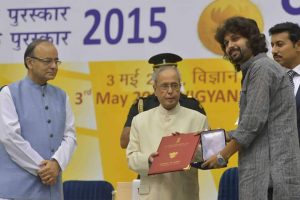
Q1. THE MORAL -:
Mr Bhattacharyya! share with us something about your childhood life and how that connects
with your present achievements?
AMARTYA BHATTACHARYYA-
Fortunately or unfortunately, my family relocated multiple times when I was a small child. I was born
in Kolkata, then we moved to Purulia when I was around 3 years old. Again we shifted back to
Sonarpur, which was then an outskirt of Kolkata. So, I have rooted myself to the metropolitan roots,
nature, as well as a small-town culture. All this happened unknowingly. And since every child is
curious by nature, I was also an explorer of my environment. The nature of children is such that they
intimately mingle with their environment and develop an attachment. And again, when you relocate,
there’s a great sense of detachment. These attachments and detachments somehow reflect directly
or indirectly in my work. My works are also very observant, very explorative, much like the kid that I
once was, or I always am.
I also feel that my art teacher in school, Shri Siddharta Mukherjee, and my cricket coach Shri Arjun
Mukherjee played huge roles in shaping me up. While my art teacher wiped off the obsessive social
conditionings at a very tender age and opened my eyes towards unconventional thoughts, my
cricket coach introduced me to the addiction of diving into the depths of every subject. Not just
cricket, he shaped my mind with some very important philosophical mentorship.
Q2. THE MORAL- You are from West Bengal, but now settled in Odisha. How do you see the culture of these two states? Any difference? Which culture feels more authentic – Odia or Bengali?
AMARTYA BHATTACHARYYA-:
Geographies never bind; neither the body, nor the mind. Boundaries are for politicians and fanatics to chew upon. I belong to West Bengal, to Odisha, to India, to Asia, to the world, and to the entire cosmos. Frankly, I do not know anything that I may call foreign. Everything is either known, or unknown. The known is my own, and the unknown is what I wish to make my own. Having said that, I’m much observant to the anthropological aspects of a culture, and I find immense interest in analysing them. I think Odia and Bengali cultures are superficially similar, but at the very core, they are quite opposite in nature. The very sense of a family is different in Odisha and in Bengal. The way a child is nurtured is very different. The priorities and ambitions are also different. Which culture is more authentic? There’s no such thing as unauthentic. Everything is authentic in its own right. They are different, and beautiful in their own ways. Odia culture is much more indigenous because of their history and social nurturing. Odisha has a fascinating spectrum of tribal cultures. There’s a higher quotient of traditional retention and folk-orientation, and lesser room for radical ideas and changes. Bengali culture, on the other hand, is much more exposed to other cultures because of historical reasons and cross-cultural interchange. Bengalis are much more active and reactive, both at the same time. There’s a keenness to embrace radical ideas and revolutionary thought
Q3. THE MORAL- Mr Bhattacharyya, Odia cinema is falling into a miserable situation. It’s rare to find a good
cinema in Odia industry nowadays. What’s the reason behind of this downfall? In which way cinema
industry will develop and free itself from the mentality of copy-paste?
AMARTYA BHATTACHARYYA-:
People will not like it if I say much about this. All I can say is, if you want good things to happen,
follow just two steps. Step 1, discard the rotten items. Step 2, embrace and glorify the good things
and possibilities. It’s very simple.If viewers are reluctant to accept anything new, of course people will feed you with copy-paste stuff.
It’s also strange how Odia media (not all, but many of them) ignore the good films and keep
promoting the rotten stuff. Cultural change doesn’t come only from the makers. It’s a 360 degree
process.Take the state film policy as an example. We all waited for a film policy, and then came one. But is
this what Odia cinema needed? Do you think it supports young independent film-makers? Not at all!
It’s an added desert on the plates of millionaires. If the state’s film policy doesn’t support
independent filmmaking, there’s nothing much we should hope for.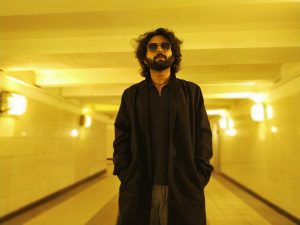
Q4. THE MORAL- Representing the reflections of society and interpreting real facts in order to bring several
changes in people’s lives with intent of positive thought and action, is the motto for every filmmaker,
as per our thought. Do you agree with the view? Have you been successful in achieving the same?
Suppose you’ve put in your best efforts, what’s the way to know if it worked? Will it be awards or
views that will judge that?
AMARTYA BHATTACHARYYA-
Firstly, I do not agree that cinema is the reflection of society and interpretation of real facts. Frankly,
I’m not interested to mirror reality. There are thousands of filmmakers who do that. Let them do it. I
am not interested. I reflect my own imaginations. I reflect my own ideas. They may or may not have
anything to do with reality.
Also, what’s positive and what’s negative depends on who you are, what you think, and which
ideology you have subscribed to. Yes, to stir my viewers is my objective. I want them to be moved.
But they’ll be moved as per the intellectual ingredients they possess. Imposition is not my game.
Regarding awards, well … it’s so dilute these days. Change the jury, and the winners will change. You
asked me about Odia industry. Have you followed the Odia state film awards? Is it not a crime that
an actor like Choudhury Bikash Das goes un-awarded for his performance in Khyanikaa, or a gem of a
talent like Kisaloy Roy gets no recognition for his music? Add to that, did anyone raise the concern?
None! All are in mute mode, and satisfied. And you want Odia film industry to change? Well, awards
could have been a benchmark only if it was judged by people who had competence and fairness. As
it stands today, those who judge films and decide awards are highly questionable. And this is not the case in Odisha alone. The concern extends beyond the state or the national peripheries.
Q5. THE MORAL- Mr Bhattacharyya, KHYANIKAA is one of the finest cinemas in Odia language. You have
incorporated a lot of social messages through it. But will the film appeal to all classes, and will they
understand the moral value?
AMARTYA BHATTACHARYYA-:
We have a problem of defining classes when it comes to art. The people who pretend to be classy in
their daily lives are the ones who suddenly become a ‘common man’ when it comes to
comprehending an art form. Most people around me wear branded clothes, travel in reservation
coaches, some have air conditioned homes, etc. So in their livelihood, they are classy. But when it
comes to appreciation of art, they become just ‘a common man’.
There is less truth and more politics in this class hierarchy. I believe, anyone who is not absolutely
dumb, can comprehend my films easily. There’s another interesting perception. Viewers think “I can
understand, but will viewers understand?” Well, you are the viewer. If you get it, that’s it! Enjoy and spread the word.
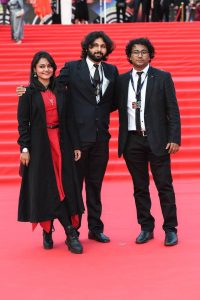
Q6.THE MORAL-We know you did some experimental work by mixing psychology with drama and presenting a formnamed Psychodrama. How is it influencing the people?
AMARTYA BHATTACHARYYA-:
Interesting question! Yes, through ‘Capital I’, I introduced something which I call ‘Psychodrama’.
There’s a reason as to why I name it so. Films like ‘Capital I’ are meant to disturb the comforted
ones, and comfort the disturbed. There are those who thought ‘Capital I’ to be the finest film they’ve
seen. Some thought it’s against the culture. Some found it very difficult and weird. Some even said
“badly worded”. I remember, I remember them all. But what comforts me is the fact that the film
has impacted every viewer. I can bet that those who have watched the film will never forget the
experience of it, even if they have hated it. I am not surprised that ‘Capital I’, though it was a part of
over twenty international festivals, did not win a single award. Such films disrupt, they don’t
appease the egoists with a sweet sense of pleasure. So of course, there’s no question of winning
awards. But if you are asking if it influenced people … yes, very much. Just a few days back, a young
filmmaker met me and showed me his film. He said that the climax of his film was heavily inspired by ‘Capital I’, and that ‘Capital I’ was the film that showed him the way.
Q7. THE MORAL- You work in an IT sector. So you must be aware of the digital market. How can it help the young
filmmakers earn returns from their works? How can there be economic growth through the qualitative cinema?
AMARTYA BHATTACHARYYA-:
I am aware of the digital market but I have no answer to this question. It seems that filmmakers are
expected to struggle and make courageous work only for the market to discard them as “not
sellable”. I haven’t seen a “market” which has the balls to welcome newness and avant-garde
cinema. They talk big, but they think shallow. I have little expectations from the market, be it digital
or any other market. If anyone from any digital market is reading this, please, I request you, prove
me wrong. Instead of piling up dumb films starring popular faces, dare to go against the tide and
show support to those who deserve it.
Q8. India is ranking first in terms of producing cinema. Is it appropriate that when people don’t have
suitable means of living, they value entertainment as meaningful?
AMARTYA BHATTACHARYYA-:
Indian cinema is like Indian population. Just a number game. Ultimately, they’re good when it comes
to banging ‘Thaalis’! By the way, I do not see cinema or any art as entertainment. So, yes, even if
people are struggling to find their living, art can be meaningful. Cinema or any art can add meaning
to their struggles. They’ll find new strength, new resilience to overcome their challenges. But I am
talking about cinema or any other art-form, I’m not talking about Bollywood. So please don’t get
confused.
Q9.THE MORAL-Benaras and Shiuli are your high-profile creations which scenically represents the society. How did you manage to make them? Any inspiration?
AMARTYA BHATTACHARYYA-
No inspiration at all. Or rather, I draw inspiration from every moment of life. I do not feel ‘Benaras’
or ‘Shiuli’ to be my best works. My best films are all those which are yet to be made. I don’t think
much about how I make films. I just make them. Just the way I breathe, I sleep, I eat, I dream, I also
make films. It’s a part of staying alive.
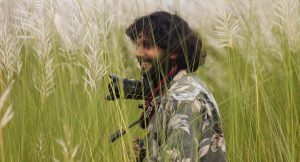
Q10. THE MORAL- What is your future plan regarding filmmaking?
AMARTYA BHATTACHARYYA-
I never plan. I don’t know what’s next. I don’t know what’s coming. Whatever comes, I’ll try to make
the most of it. I’m not the one who likes to plan this and plan that. Being in the moment is the real
experience. At this moment, I am responding to your question. That’s the only thing I’m doing right
now. And I’m doing it passionately. Next moment, something else will come up. I’ll do that whole- heartedly. That’s how I live in moments, not in spans.
Q11. THE MORAL- How do you manage filmmaking and IT together?
AMARTYA BHATTACHARYYA-:
Management comes from planning. Since I don’t plan much, I need not manage. In my office, I do
my IT work. Outside my office, I do my film-work. It’s very easy, unless one complicates it. Managing
or planning too much is very dangerous. It can fuck you up!
Q12. What kind of family support do you get?
AMARTYA BHATTACHARYYA-:
Fortunately, I belong to a family of educated minds. And educated minds don’t poke. So, they don’t
unnecessarily bother me. That’s the biggest support. Yes, encouragement and moral support are
important, and they do provide that, but the most important support is not to disrupt and intrude
my personal space. That space is where creations are born. Non-invasion is very important.
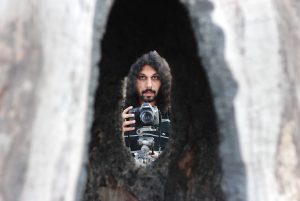

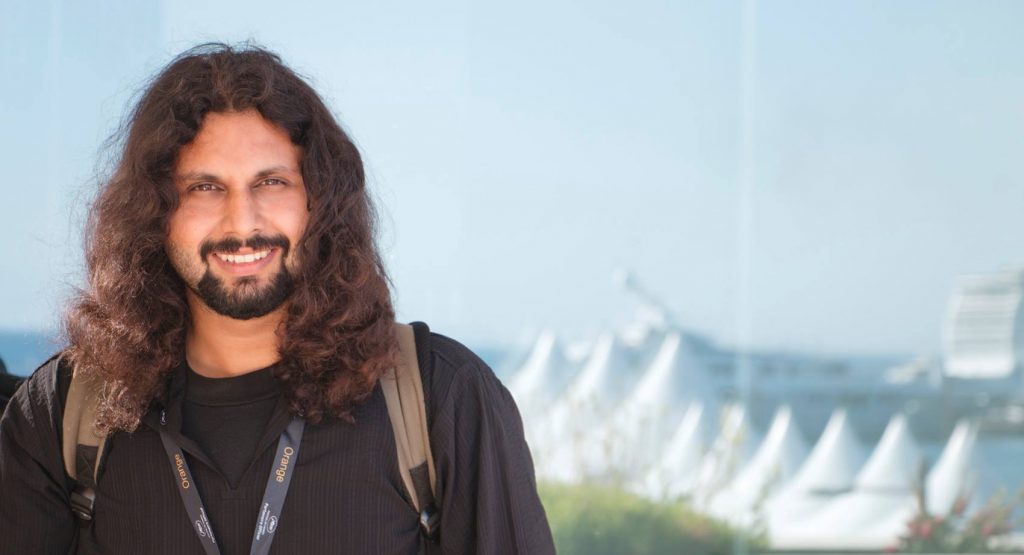
1 Comment
Thanks for sharing. I read many of your blog posts, cool, your blog is very good.